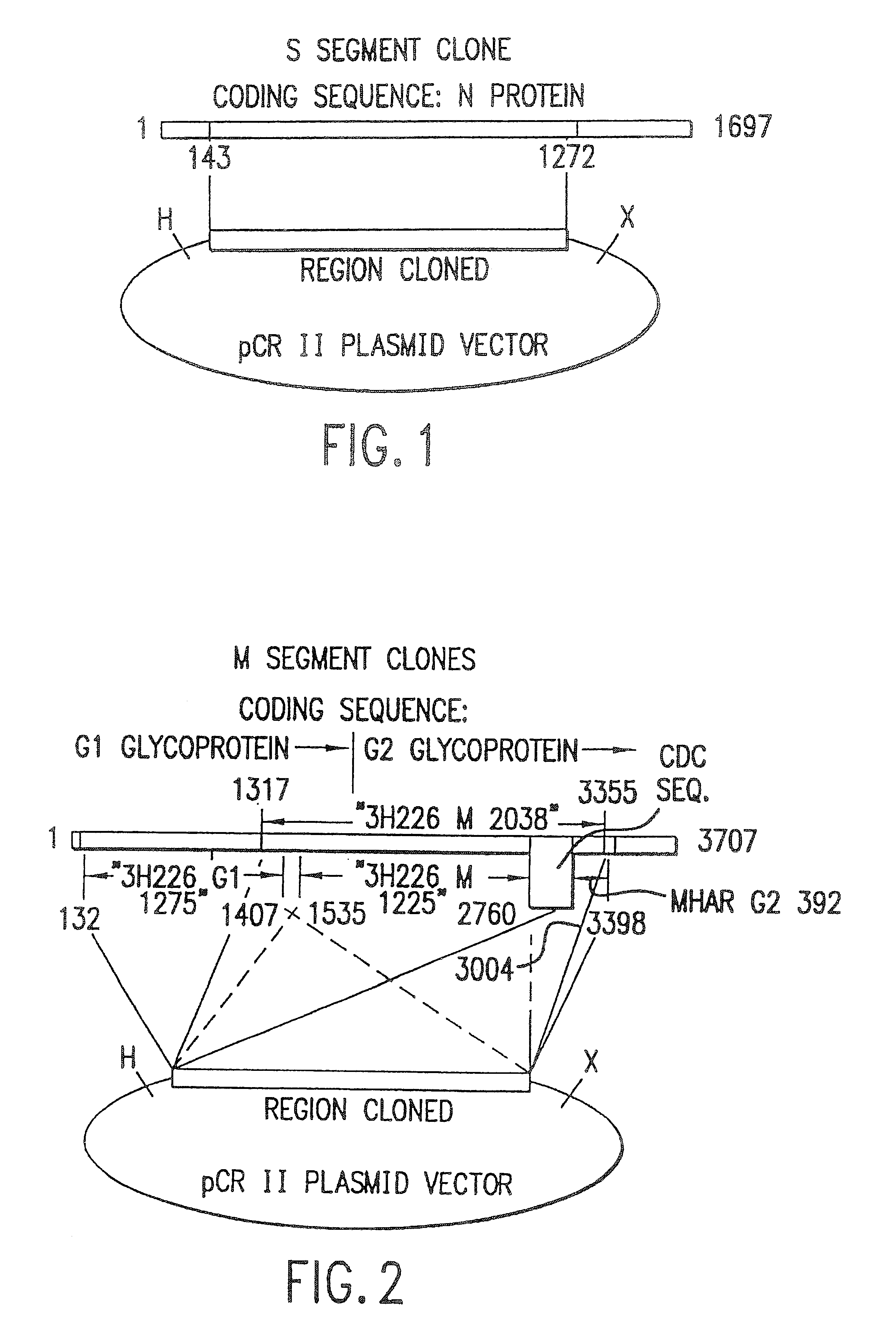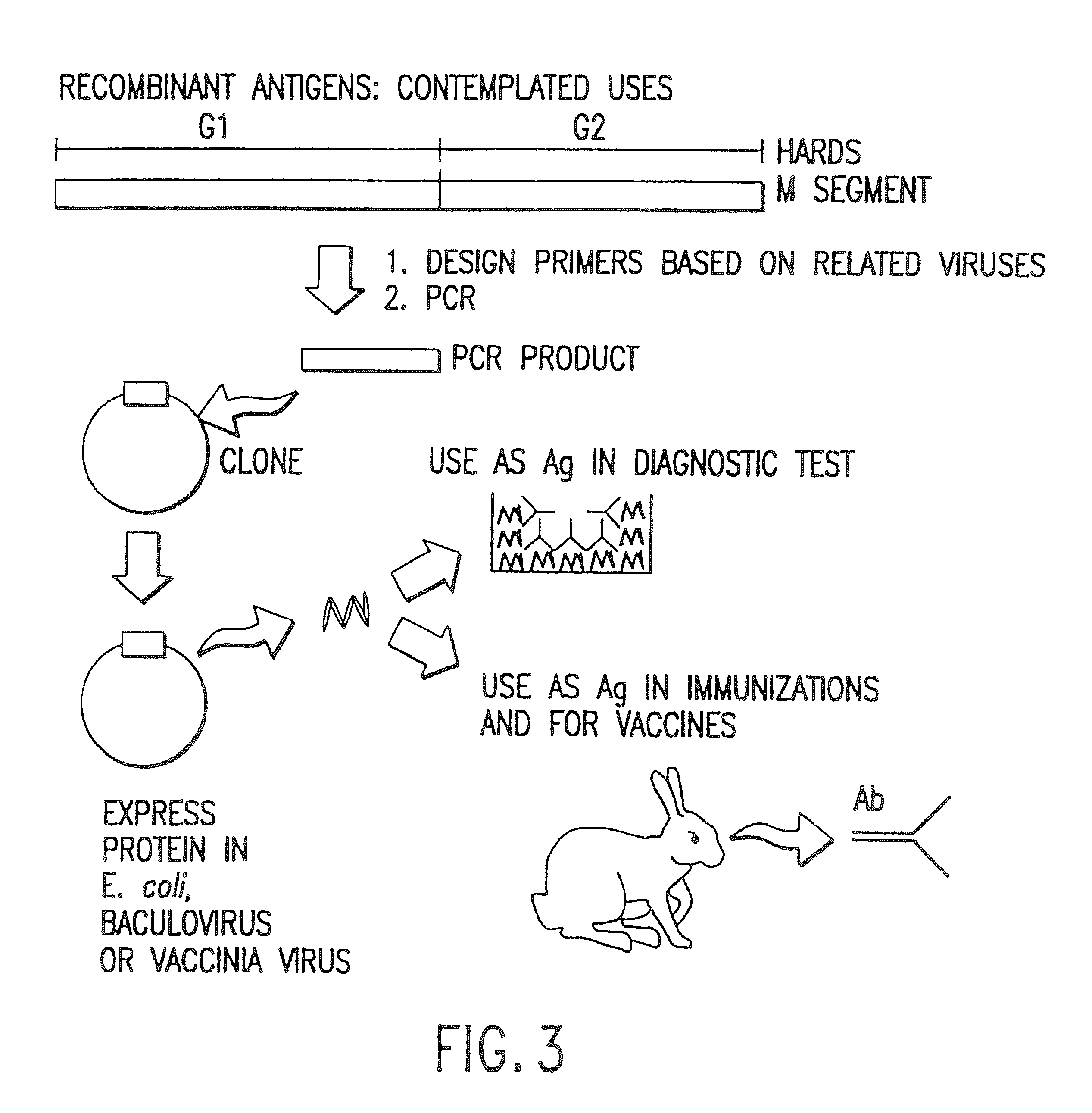Molecular clones producing recombinant DNA antigens of the hantavirus-associated respiratory distress (HARDS)
a technology of hantavirus and dna antigen, which is applied in the field of molecular clones producing recombinant dna antigens of hantavirus-associated respiratory distress syndrome, can solve the problems of difficult identification of hards virus infection and influenza, insufficient sensitiveness to allow diagnosis of hards infection, and less brisk antibody respons
- Summary
- Abstract
- Description
- Claims
- Application Information
AI Technical Summary
Problems solved by technology
Method used
Image
Examples
Embodiment Construction
Section I
A. Design of PCR Primers
The following regions were identified as candidates for primer synthesis by alignment between the Prospect Hill Virus M segment ("PHV"; GenBank accession X55129) and the M segment of Puumala strain K27 ("PUUM"; GenBank accession M14627) as regions with a high degree of nucleotide sequence homology:
The following primers were designed according to a similar plan, but using the S segment of PHV (GenBank X55128) or Puumala virus (GenBank M32750) as template for primer design.
In addition to the primers described above, which were all designed on the basis of sequence similarity between Prospect Hill and Puumala viruses, we designed two primers from nucleotide sequences obtained from the HARDS virus itself (the 3' portion of the 3H226 G1 1275 clone). These were:
B. Reaction Mixes and Conditions: Reverse Transcription and "First Round" PCR
The initial reaction mixes (for reverse transcription and subsequent PCR thermal cycling) were as ...
PUM
| Property | Measurement | Unit |
|---|---|---|
| volume | aaaaa | aaaaa |
| temperature | aaaaa | aaaaa |
| concentration | aaaaa | aaaaa |
Abstract
Description
Claims
Application Information
 Login to View More
Login to View More - R&D
- Intellectual Property
- Life Sciences
- Materials
- Tech Scout
- Unparalleled Data Quality
- Higher Quality Content
- 60% Fewer Hallucinations
Browse by: Latest US Patents, China's latest patents, Technical Efficacy Thesaurus, Application Domain, Technology Topic, Popular Technical Reports.
© 2025 PatSnap. All rights reserved.Legal|Privacy policy|Modern Slavery Act Transparency Statement|Sitemap|About US| Contact US: help@patsnap.com



